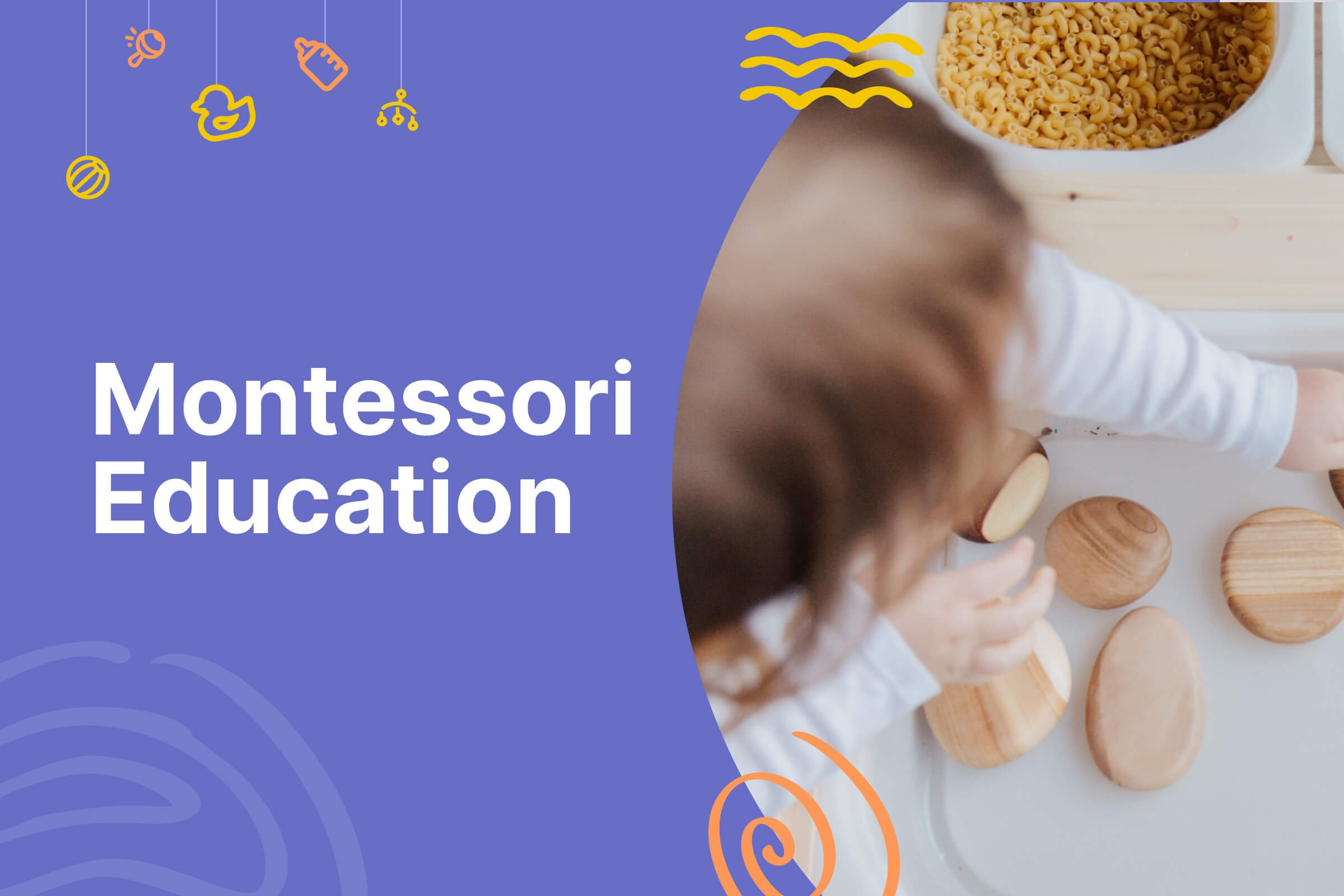Montessori education is a child-centred approach to learning that emphasizes hands-on learning and encourages independence.
This approach was developed by Italian physician and educator Maria Montessori in the early 1900s and has since gained popularity in many countries, including Malaysia.
In this article, we will explore the pros and cons of Montessori education in Malaysia and provide a guide for parents who are considering this option for their children.

Pros of Montessori Education in Malaysia
Child-Centred Education
Montessori education is designed to meet the needs of each individual child. This approach recognizes that children learn in different ways and at different paces and allows them to work at their own pace. This can lead to increased engagement and motivation, which can lead to better learning outcomes.
Hands-on Learning Experience
Montessori classrooms provide children with materials and activities that allow them to explore and learn on their own. This approach can help children develop problem-solving skills and creativity.
Encourages Independence
Children are encouraged to take responsibility for their own learning and to make decisions about what they want to learn and how they want to learn it. This can help children develop self-confidence and self-esteem.
Cons of Montessori Education in Malaysia
Limited Interaction with Peers
Because children work at their own pace, they may not have as much opportunity to interact with other children as they would in a traditional classroom setting. This can limit social development and may make it more difficult for children to develop important social skills.
Not All Teachers are Certified Montessori Educators
This can lead to inconsistencies in teaching methods and may make it more difficult for children to learn.
Limited Extracurricular Activities
Montessori schools may not offer the same range of extracurricular activities as traditional schools. This can limit opportunities for children to develop interests and talents outside of the classroom.
Comparison of Education Methods

When considering Montessori education, it’s helpful to compare and contrast its methods with other education methods.
This table provides an overview of the key differences between Montessori education, Waldorf education, the Reggio Emilia approach, and traditional education.
| Feature | Montessori Education | Waldorf Education | Reggio Emilia Approach | Traditional Education |
|---|---|---|---|---|
| Teaching Method | Child-Centred | A holistic approach emphasizing the arts and hands-on activities | Child-Centred approach emphasizing collaboration and project-based learning | Teacher-Centred |
| Classroom Structure | Mixed-age classrooms | Mixed-age classrooms | Mixed-age classrooms | Same-age classrooms |
| Learning Pace | Individualized | Group-paced | Child-directed | Group-paced |
| Curriculum | Child-directed | A holistic approach emphasizing the arts and hands-on activities | Child-directed | Curriculum-based |
| Classroom Materials | Specifically designed, hands-on materials that encourage exploration | Emphasis on natural materials and artistic materials | Variety of materials to express themselves through various media | Standardized textbooks and materials |
| Teacher’s Role | Facilitator, guide, and observer | Facilitator and collaborator | Collaborator and facilitator | Lecturer, instructor, and enforcer of rules |
| Classroom Environment | Child-friendly, open, and natural | Emphasis on natural materials and artistic materials | Emphasis on aesthetics and organization of classroom | Formal, structured, and often impersonal |
| Discipline Approach | Natural consequences and redirection | Emphasis on positive reinforcement and modelling | Collaborative problem-solving and conflict resolution | Punitive measures and reward systems |
| Assessment and Evaluation | Continuous and ongoing, often through observation and self-assessment | Narrative assessments and portfolios | Narrative assessments and documentation of learning | Periodic testing, grading, and report cards |
| Collaboration and Competition | Encouraged and emphasized | Emphasis on collaboration and cooperation | Emphasis on collaboration and cooperation | Often discouraged or viewed as counterproductive |
| Homework | Limited or non-existent | Limited or non-existent | Limited or non-existent | Regular and assigned as reinforcement and preparation for exams and tests |
Montessori education, Waldorf education, and the Reggio Emilia approach share some similarities, such as mixed-age classrooms and a child-centred approach to learning. However, they also have unique features that distinguish them from each other.
For example, Waldorf education emphasizes artistic activities and emphasizes a holistic approach to learning, while the Reggio Emilia approach emphasizes collaboration and project-based learning.
Traditional education, on the other hand, has a more standardized and formal structure, with a focus on teacher-led instruction and periodic testing and grading.
While traditional education can be effective for some students, it may not be suitable for those who learn best through hands-on and individualized learning experiences.
Choosing the Right Education Method for Your Child
When it comes to choosing an education method for your child, it’s important to consider their individual learning style and needs.
While Montessori education can be a great fit for some children, other approaches, such as Waldorf education and the Reggio Emilia approach, may also offer unique benefits and advantages.
Parents should research different education methods, visit schools, and talk to educators to gain a better understanding of each approach. They should also consider the cost and location of schools and assess their child’s progress to ensure that they are receiving the best education possible.
Two case studies of Western-inspired Montessori schools in Malaysia:
Case Study 1: EtonHouse Malaysia Montessori
EtonHouse Malaysia Montessori is part of the EtonHouse International Education Group, which has schools in over ten countries. The Montessori program at EtonHouse Malaysia is based on the Montessori approach developed by Maria Montessori but has been adapted to suit the needs of the Malaysian context.
The school uses a bilingual approach, with English and Mandarin as the languages of instruction. The school emphasizes a strong connection with nature and outdoor learning and provides opportunities for children to explore and learn in a natural environment.
Case Study 2: Children’s House Montessori Preschool
The Children’s House Montessori Preschool is a privately-owned Montessori preschool with locations in various parts of Malaysia. The school’s Montessori program is based on the Montessori approach developed by Maria Montessori and emphasizes a child-centred approach to learning.
The school uses a bilingual approach, with English and Mandarin as the languages of instruction. The school’s curriculum includes a range of subjects, including math, science, language, and cultural studies, and is designed to encourage children to develop a love of learning and a sense of curiosity about the world around them.
Both of these case studies highlight how the Montessori approach has been adapted to suit the needs of the Malaysian context while remaining true to the core principles of the Montessori approach.
By emphasizing a child-centred approach to learning, hands-on learning experiences, and the development of independence, these schools provide children with a unique and effective learning experience that can benefit them throughout their lives.
Final Thoughts on Exploring the Pros and Cons of Montessori Education in Malaysia
In conclusion, Montessori education offers a unique approach to learning that emphasizes child-centred education, hands-on learning experiences, and the development of independence. While it may not be the best fit for every child, it is a great option for those who thrive in a more individualized and self-directed learning environment.
By comparing and contrasting different education methods, parents can make an informed decision about which approach is right for their child. Ultimately, the goal should be to provide children with a high-quality education that helps them develop their full potential and prepares them for success in their future endeavours.
Most popular newborn gift for baby
Whether you’re searching for the perfect gift for your newborn or a baby girl or boy, we have you covered.
At Blissbies, we take pride in curating thoughtful and educational newborn gifts, baby gifts, and hampers for new parents in Malaysia. Our gifts are designed to promote a positive learning experience for newborns and young babies while supporting parents in their new journey.
Browse our website to find the perfect gift for your little one or a new parent in your life. With our fast and reliable shipping, you can enjoy the convenience of having your purchase delivered straight to your doorstep. Shop now and experience the joy of giving the perfect gift.
Visit our website today and see why we’re the go-to destination for baby gifts.











